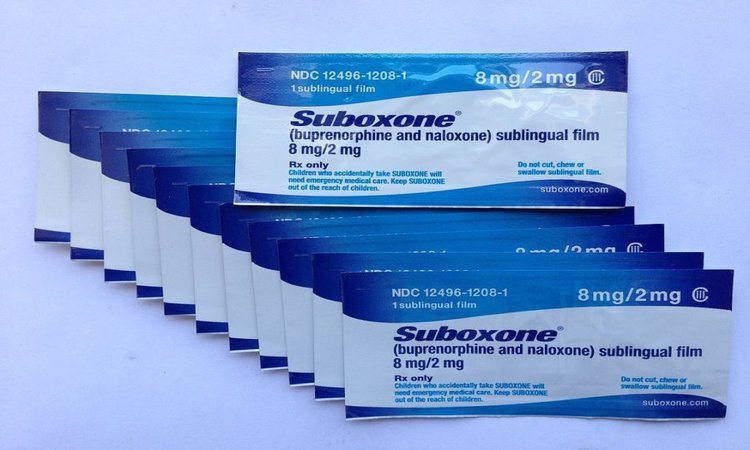
Suboxone Abuse – Suboxone is a prescription drug that includes two medications, buprenorphine and naloxone. It is approved by the Food and Drug Administration to treat addiction to opioids and opiates, such as morphine and heroin.
Buprenorphine is in a class of drugs called opioid partial agonists, which help alleviate the symptoms of opioid/opiate withdrawal. Naloxone belongs to a class of pharmaceutical drugs known as opioid antagonists, which completely reverse the effects of opioids and prevent overdose. This combination drug is typically used as part of a more comprehensive treatment program that should include therapy, counseling, lifestyle changes, and other interventions.
According to the Drug Enforcement Administration (DEA), there were more than 9 million prescriptions filled for buprenorphine in 2012. Most of these orders were filled by people who were struggling with addictions to other opioids such as heroin and oxycodone.
Suboxone, although intended for the treatment of addiction to other opioids, has still been a product of abuse. The Substance Abuse and Mental Health Services Administration (SAMHSA) reported that in 2011, more than 21,400 people visited emergency departments in the U.S. for problems related to the misuse or abuse of buprenorphine.
Intended Use
Suboxone treatment usually consists of having a client follow a structured regimen while monitoring them to ensure the dose is working properly. In cases where the dose seems insufficient to ward off withdrawal symptoms, it will be increased by 2-4 mg per day until satisfactory. Once relief is achieved, the dose will remain the same until the physician and client are ready to discontinue Suboxone.
Because Suboxone is itself an opiate, the client will need to gradually reduce the dosages and slowly wean themselves off Suboxone, thus all opiates, entirely. The recommended length of Suboxone treatment is a minimum of one year, but it isn’t uncommon for clients to stay on Suboxone for even longer.
Despite buprenorphine working similarly to other illicit painkillers by occupying opioid receptors, it does not induce the same euphoria when taken as prescribed. This happens because, in contrast to buprenorphine, naloxone works by detaching any drug molecules attached to the opioid receptors, including buprenorphine.
Therefore, Suboxone, which is a mixture of buprenorphine and naloxone, is formulated with the intention of preventing its abuse – if too much Suboxone taken, the naloxone rejects the buprenorphine, precipitating an immediate withdrawal. This makes Suboxone particularly well-received in the medical community since it can be prescribed by physicians to patients for use at home, whereas methadone treatment requires all administration to be monitored to prevent abuse.
Suboxone Abuse
Considering the action of naloxone in preventing its misuse, how is it that people still find ways to get high off Suboxone or even become addicted to it? The most common forms of Suboxone abuse are taking it in higher doses than prescribed and in combination with other substances. People typically combine Suboxone with alcohol, cocaine, or benzos to enhance its effects, though this kind of polydrug use greatly increases the likelihood of harmful side effects from all drugs involved.
Signs of Suboxone abuse and addiction include the following:
- Administering Suboxone in other ways than prescribed, such as crushing and snorting it or injecting it
- Utilizing Suboxone to relax, sleep, or get high
- Consuming Suboxone in larger doses than it was prescribed
- Attempting to use Suboxone to forestall withdrawal symptoms
- Extreme lethargy
- Unpredictable mood swings
Many people assume that only those undergoing Suboxone treatment are susceptible to Suboxone abuse or addiction, but this is unfortunately not the case. Suboxone is now available as a street drug like other illicit opioids. The DEA claims that 10,804 buprenorphine-related drug seizures were undertaken in 2012 alone.
The SAMHSA notes that a staggering 90% of Suboxone abusers acquired the drug through illicit means. Furthermore, 17% of physicians feel that Suboxone prescribing practices are contributing to the opioid epidemic because it is given out too easily and without enough caution.
Also, many prefer Suboxone over other prescription and illicit painkillers – even heroin – because it is generally less expensive. Although the northeastern region of the United States is particularly well-known for Suboxone’s high black market availability, the illegal Suboxone trade is prevalent throughout the nation.
Treatment for Suboxone Abuse
Suboxone abuse is rarer than the abuse of more powerful opioids, but it still does occur. Those abusing Suboxone may have received it legitimately for opioid replacement therapy or illegally through prescription drug diversion. In any case, abuse of this drug can have harmful effects, and those affected should seek treatment as soon as possible.
Treatment for Suboxone abuse may require a medical detox following by long-term inpatient therapy and counseling. Our center offers an integrated, evidence-based approach to substance abuse treatment, and employs medical professionals who deliver these services with compassion.
You can reclaim your life and experience the happiness you deserve! Contact us today to find out how we can help you start on the path to long-lasting recovery!
